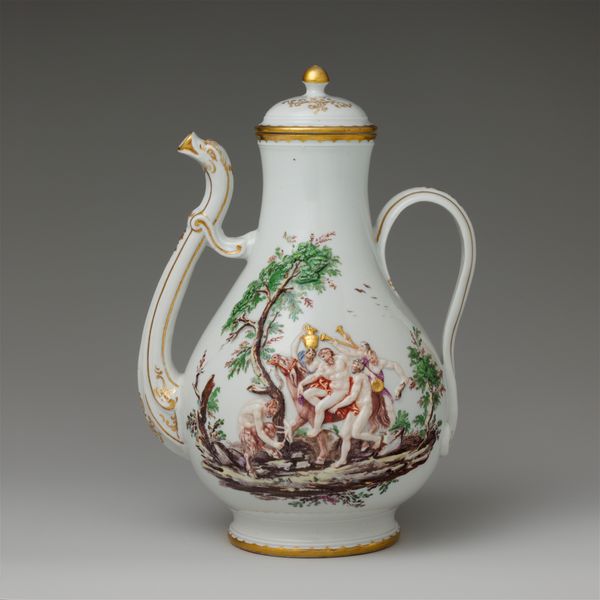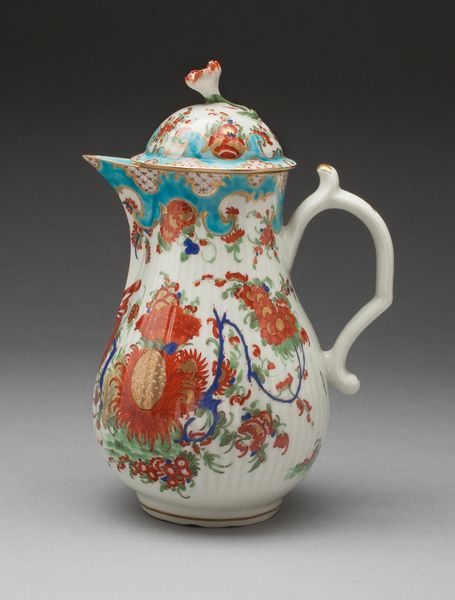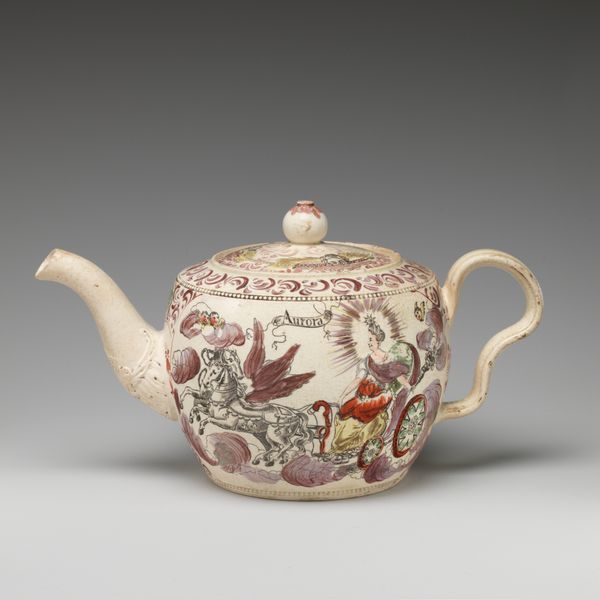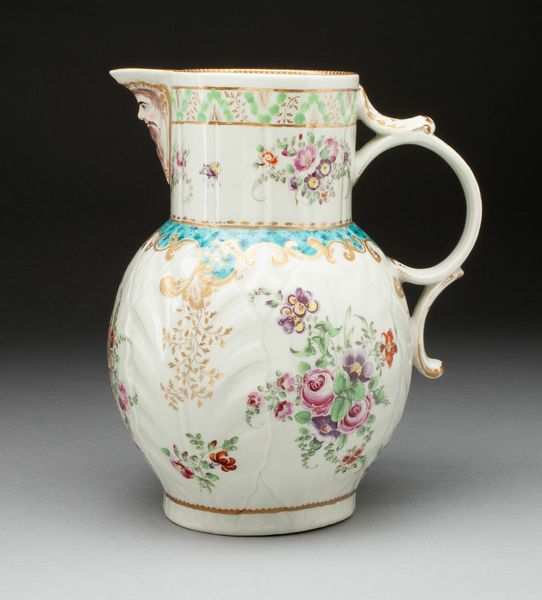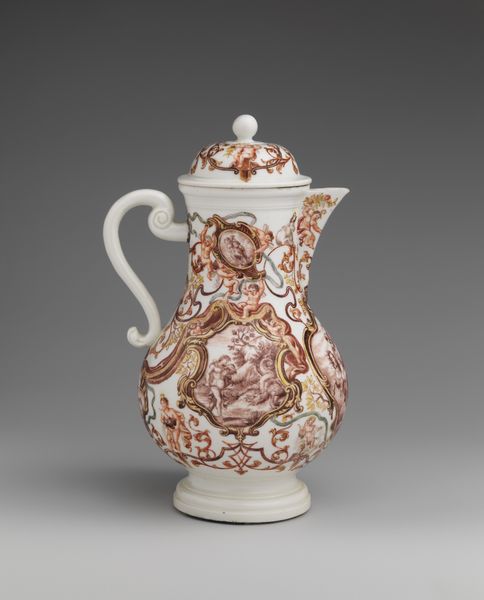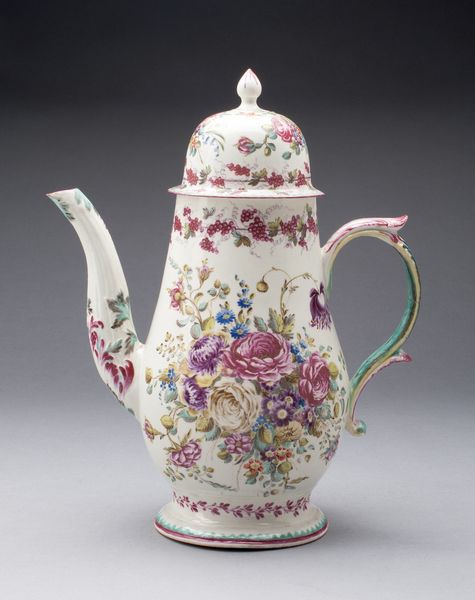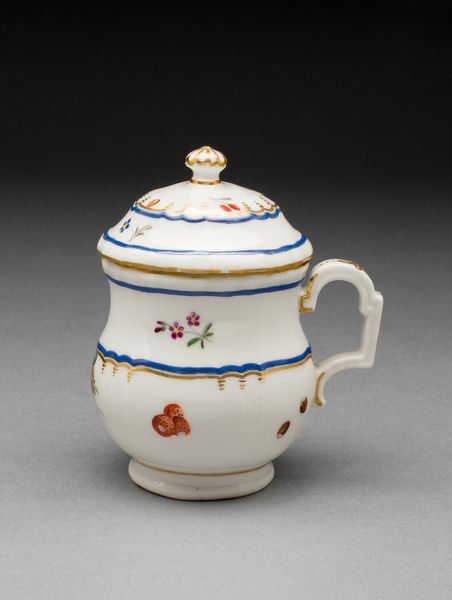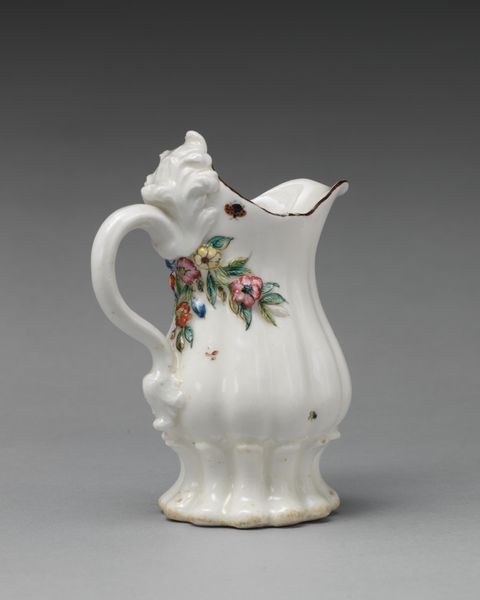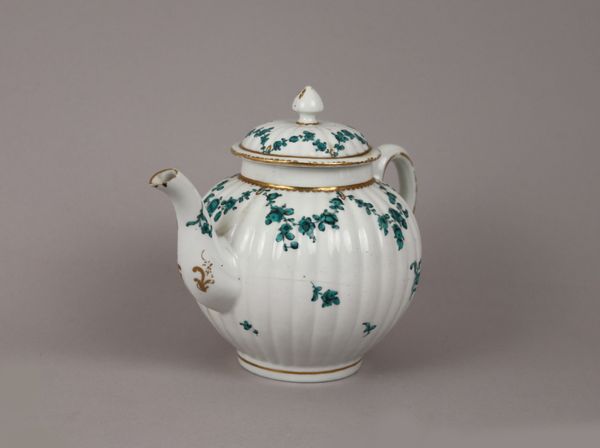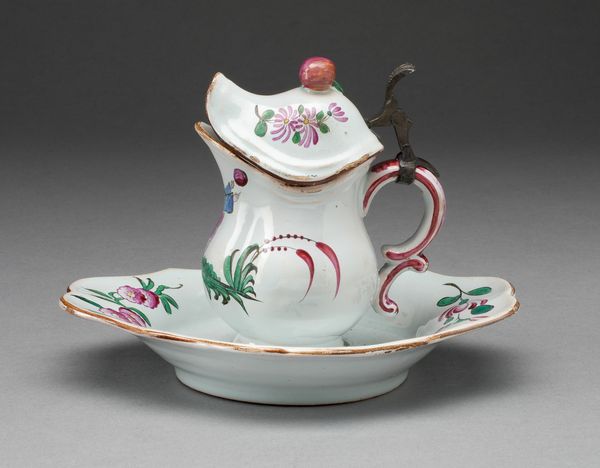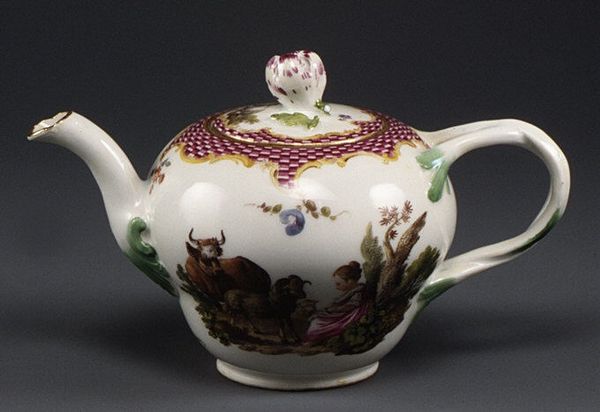
ceramic, earthenware, sculpture
#
art-nouveau
#
ceramic
#
abstract
#
earthenware
#
stoneware
#
sculpture
#
ceramic
#
decorative-art
Dimensions: 7 3/16 x 7 1/8 in. (18.3 x 18.1 cm)
Copyright: Public Domain
Curator: Well, this is a perplexing piece. A stoneware teapot conceived by George E. Ohr between 1894 and 1903, presently housed at The Met. What springs to mind for you? Editor: Intrigue, and a dash of unsettling wonder. The dimpled texture, the almost flesh-like tone, even the serpent-headed spout…it's more organic than ceramic, almost alive. It really pushes the boundaries of what we expect a humble teapot to be. Curator: Indeed. Ohr's work intentionally disrupted conventional expectations, challenging the formal constraints typically imposed on functional pottery. His embrace of imperfection was a pointed commentary on mass-produced, commercialized ceramics of the late 19th century. He fashioned himself as a singular artistic figure. Editor: The spotted surface almost appears diseased but also hints at seeds and germination—an interplay of beauty and decay. This color especially, in all cultures, holds very deep symbolism with ideas related to love, romance, joy, and anger! It is a lot to hold in a simple household object. Curator: Exactly, it carries considerable weight in this design! And Ohr wasn't merely interested in aesthetic innovation, though there's plenty here. The very act of hand-crafting each piece, deforming the clay to his own expressive ends, was an argument for the value of the individual artisan in a rapidly industrializing world. This was an expression of independence! Editor: I see. There’s definitely an untamed, almost primal quality, wouldn't you agree? It feels almost deliberately awkward in form, like it resists easy consumption or idealization. Curator: That's precisely the point. Ohr’s ceramics rejected prevailing Victorian sensibilities of order and restraint. He sought to provoke, to challenge viewers to question the role of art and craft in society. Its current display, of course, within the MET, also contributes to this dialogue by assigning historical value. Editor: So, it seems even a seemingly straightforward teapot can carry a rather complex historical message? Curator: Absolutely! Ohr’s legacy serves as a reminder of art’s capacity to ignite social, cultural, and artistic transformation—and he left quite a paper trail explaining his goals and methods! Editor: A peculiar object of everyday life and its historical reflection. This teapot embodies complex symbolism—certainly more than meets the eye.
Comments
No comments
Be the first to comment and join the conversation on the ultimate creative platform.
